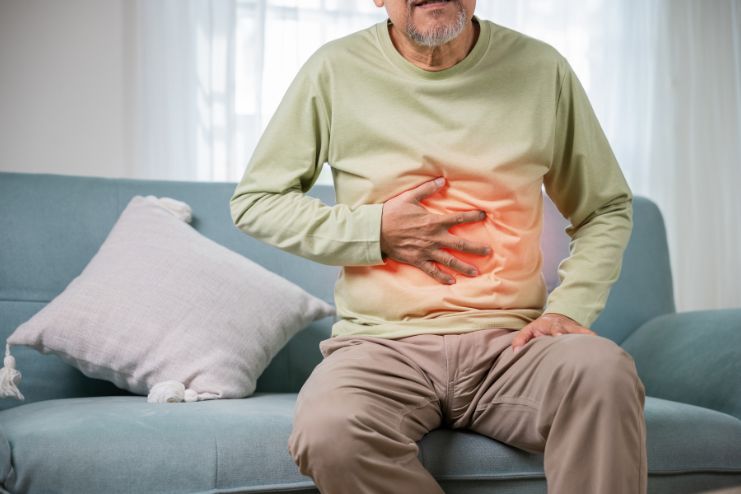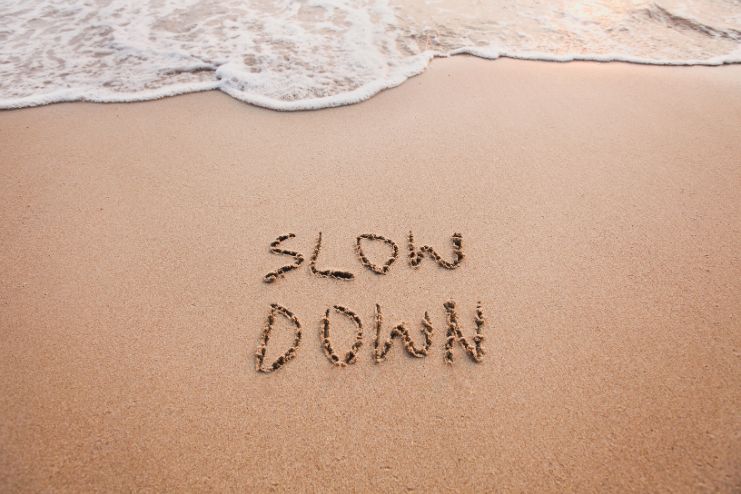Affiliate Disclaimer
Some links in this article are affiliate links. We may earn a small commission if you make a purchase through these links, at no extra cost to you. We only recommend products we find useful to our readersWe’ve all been told, “Chew your food well.” But have you ever stopped to wonder why?Imagine skipping a meal and feeling stuffed afterward. Or gobbling a meal and finding yourself hungry again even though you’d had enough. These familiar experiences underscore why chewing is important.
Science indicates that chewing is the initial stage of digestion, and proper chewing affects metabolism, gut health, and even weight control. Some professionals recommend chewing every bite 30 times, but is there actual science behind the number? Let’s understand if chewing food helps us and in which ways.
Read More: Eating Slowly vs. Fast: How Eating Pace Affects Health and Weight.
The Science of Chewing (Mastication)

Chewing is not merely a process of forming food into tiny pieces; it’s an integral part of the digestive process. How we chew directly affects nutrient absorption, metabolism, and gut health. Studies indicate that chewing frequency affects how effectively our bodies derive energy from food. Learning about this process makes us realize why good chewing is so important for optimal digestion and health.
What Happens When You Chew?
Mastication, or chewing, is the mechanical breakdown of food into smaller pieces, helping us swallow and digest. This first step in digestion increases the surface area of food, enabling digestive enzymes to act more efficiently. Good chewing also stimulates the production of saliva, which has enzymes such as amylase and lipase that break down carbohydrates and fats. The more effectively the food is dissolved in the mouth, the easier it is for the intestines and the stomach, aiding in smoother digestion and improved calorie intake.
Saliva’s Role in Digestion
As you chew, your saliva releases enzymes like amylase, breaking down carbohydrates. This early digestion process allows your gut to absorb nutrients more efficiently.
Chewing and Gut-Brain Signaling
Chewing signals the digestive system to prepare for incoming food, stimulating the release of digestive enzymes and stomach acid. This communication between the gut and brain helps optimize digestion.
Read More: 10 Mistakes to Avoid When Trying to Improve Your Gut Health
The Health Benefits of Chewing Your Food 30 Times
If chewing your food 30 times seems difficult, consider all its benefits. Here are a few significant benefits of chewing food multiple times before gulping it down.
Improved Digestion and Nutrient Absorption:
Tiny food particles are easier to digest, putting less burden on your stomach and intestines. This may improve digestion and nutrient absorption.
Better Weight Management: Research indicates that chewing longer can prevent overeating by giving the body additional time to feel full. This simple routine can assist with portion control and weight management.

Reduced Risk of Acid Reflux and Bloating: When food is chewed poorly, it is harder to digest, leading to issues like bloating and acid reflux. Proper chewing keeps large food pieces from inducing digestive upset.
Blood Sugar Control: Slow and proper chewing has been associated with improved blood sugar control. Adequately chewed food leads to a slower glucose release, preventing blood sugar spikes.
Enhanced Gut Health: Chewing thoroughly supports a healthy gut microbiome by ensuring that food is properly broken down before reaching the intestines, making it easier for beneficial bacteria to process nutrients.
Improved Oral Health: Chewing stimulates saliva production, which helps wash away food particles, neutralize acids, and protect teeth from decay.
Read More: Gut Health Hacks: The Best Morning Foods to Kickstart Digestion
The Connection Between Chewing and Mindful Eating

Chewing isn’t only about digestion; it’s also an important part of eating mindfully. When you chew slowly and carefully, you’re more attentive to your food’s taste, texture, and smell. This increased sensitivity can result in more appreciation for food and avoiding overeating.
Eating quickly or while distracted usually results in overeating because the brain is not given sufficient time to sense fullness. By eating slowly, you allow your body to detect hunger and satiety signals, and thus it becomes easier to know that you are full. This also promotes a stress-free eating setting, minimizing stress eating and promoting better digestion.
In addition, conscious chewing promotes the mind-body connection with food, creating healthier eating and a more balanced relationship with food.
Key points on the connection between chewing and mindful eating:
- Slowing Down to Enjoy Food: Chewing each bite thoroughly not only aids in better digestion but also makes you enjoy the food. It fills you with a sense of satisfaction and gratitude for the delicious food on your plate. Chewing slowly intensifies the sensory pleasure of eating, so you can truly appreciate the flavors and textures of your food.
- Preventing Emotional and Mindless Eating: Being mindful of chewing encourages awareness of hunger and fullness signals, making it less likely to succumb to emotional eating and mindless snacking. This also helps in significant weight loss and promotes overall health.
- How Chewing Affects Satiety Hormones: Chewing stimulates hormones such as ghrelin (hunger hormone) and leptin (fullness hormone), which help control appetite and avoid overeating. Once your appetite is controlled, you are less likely to indulge in something unhealthy while managing your weight.
Are 30 Chews Necessary? What Studies Say

Though the suggestion of chewing food 30 times per bite is a common topic of debate, research indicates that the best number of chews is variable. Scientific studies have examined the impact of greater chewing on digestion, metabolism, and feelings of fullness, but there is no single number that fits all. Rather than concentrating on an exact count, the goal is to chew food until it becomes smooth enough to be efficiently processed by the digestive system.
Scientific Evidence on Chew Count:
Some studies suggest that increased chewing improves digestion and weight control, but the exact number of chews per bite may vary depending on the food type and individual needs.
In fact, according to a study, regardless of participants’ weight status, their energy intake was 11.9% lower when they chewed 40 times per meal compared to 15 times per meal. This suggests that interventions focused on improving mastication may help combat obesity. However, as the study was experimental, involved individuals with obesity, and lasted only three days, its findings should be interpreted cautiously.
Different Foods Require Different Chewing:
More challenging foods like steak require more chewing than softer foods like bread or yogurt. Rather than focusing on a strict number, the goal is to chew until the food is properly broken down.
Factors That Influence Chewing Needs:
Age, dental health, and digestion efficiency all affect how much one needs to chew for optimal digestion.
Read More: Tired After Meals? Foods That Help You Stay Energized All Day
How to Develop the Habit of Chewing More

This might seem too simple, but chewing thoroughly (30 times) takes practice. Waiting and chewing each bite before swallowing is a work of patience. Here are a few tips to help you learn this technique quickly and effectively.
Practical Tips to Chew Your Food Properly:
- Start by counting chews per bite until it becomes a habit. Once you start doing this, it will slowly become part of your eating etiquette and routine. After a while, you will not need to count the number, as it will become a habit.
- Put your fork down between bites to slow down your eating pace. When you hold the fork while eating, there is less space between bites. Keeping the fork down is a good way to allow yourself time to chew properly.
- Avoid distractions like TV or phone while eating. It has been observed that having meals with screens on makes you eat more and faster. Avoid watching TV or scrolling on your phone while eating, as this helps build a mindful connection with food and gives you the necessary pace to eat and chew food.
Best Foods to Practice Chewing On:
Start by practicing chewing 30 times on a single bite, first with more challenging foods that the body typically does not digest well, then attempting to move towards a more challenging texture. To start the practice, you can also opt for almonds, walnuts, sunflower seeds, and a few crunchy veggies: carrots, celery, broccoli, steak, or meat.
Chewy foods such as certain breads and candies can also be helpful for practice. Soft foods such as mashed vegetables, yogurt, and cooked vegetables provide a gentler introduction. Smooth foods such as smoothies, soups, and pureed foods can also support swallowing habits after good chewing.
How Long Should a Meal Take?
If you’re wondering about the ideal time duration for a meal, we can help. A well-paced meal should last 20–30 minutes, allowing enough time for proper chewing and digestion. Anything below this might cause digestive issues or impact your overall health.
Conclusion

Chewing thoroughly is one of the easiest and most powerful ways to enhance digestion, boost nutrient uptake, and promote general health. In addition to improving weight control and alleviating digestive discomfort, chewing your food more slowly promotes attentive eating, leading you to establish a healthier food relationship.
Though 30 chews per bite isn’t an absolute rule, the effort to chew slowly will change how your body digests. Next time you eat, pause for a second and savor each bite; your digestive system, metabolism, and health will thank you!
Ready to be different? Begin by adopting one mindful chewing technique today and notice the difference it can make!
References
- https://wellbeing.jhu.edu/blog/2022/12/09/timing-is-everything-why-eating-on-a-regular-schedule-supports-overall-well-being/
- https://bmcendocrdisord.biomedcentral.com/articles/10.1186/s12902-023-01379-2
- https://www.healthline.com/health/how-many-times-should-you-chew-your-food
- https://www.health.harvard.edu/blog/why-eating-slowly-may-help-you-feel-full-faster-20101019605
- https://pmc.ncbi.nlm.nih.gov/articles/PMC8660770/
In this Article


























